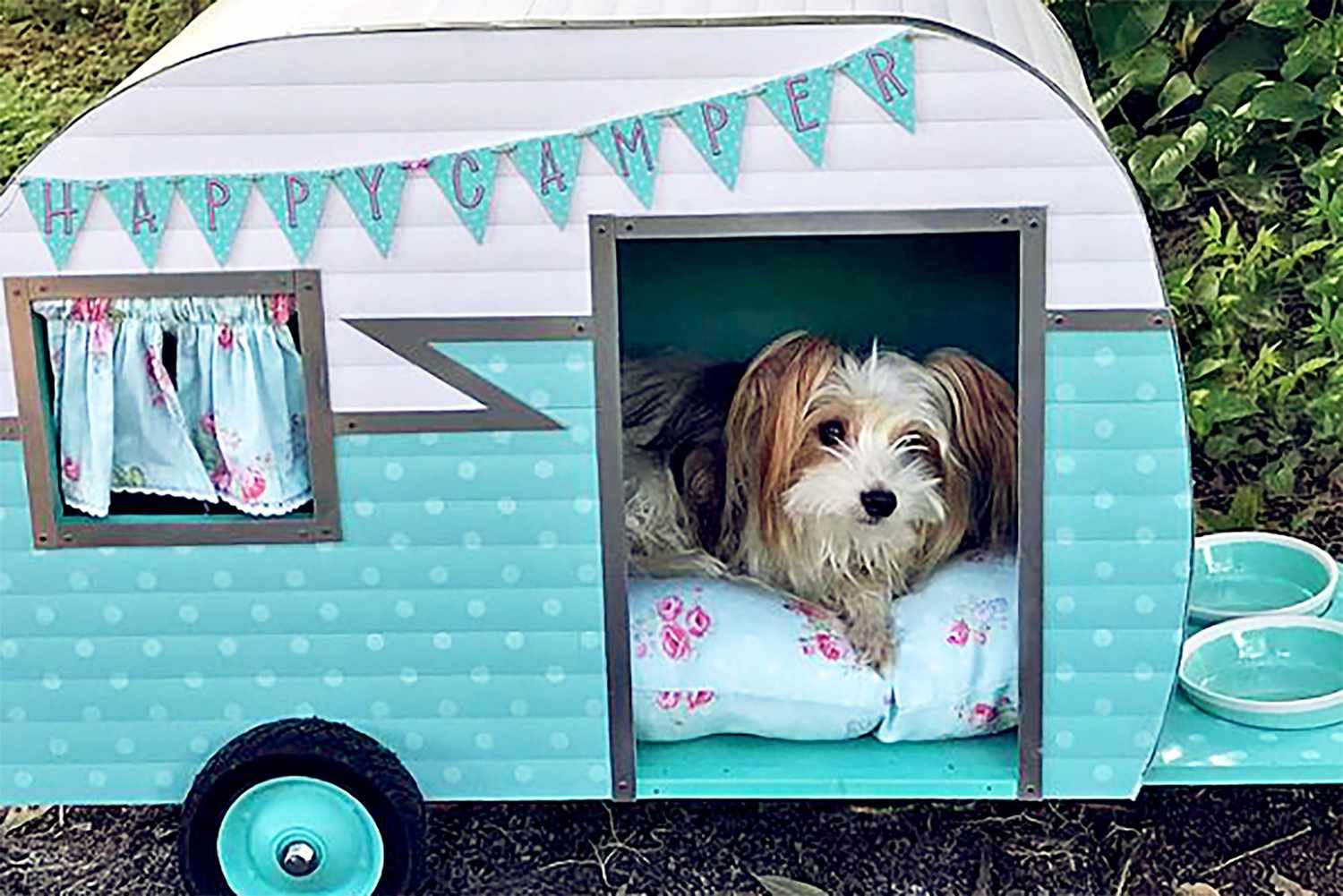Designing your child’s room is much easier than your beloved doggie’s.
For one, you can ask your child what she wants to see in her private chambers.
Even if she’s too young to talk, you can predict what she will like going by the stuff and colors she enjoys.
Dogs, on the other hand, cannot express what they want with words.
Plus, science says that doggies don’t perceive colors the way we do. This complicates things further.
To know which colors to use in your pooch’s room, it is a great idea to determine what colors canines like in the first place.
A dog’s room should have colors that appeal to her vision and interest.
You want her to feel serene when she stares at her painted walls.
The stuff you put in the room should give her the feeling of relaxation, tranquillity, and excitement in equal measure.
Here’s a quick guide on the colors and color combinations for a dog’s room.
1. Blue
According to the American Kennel Club (AKC), dogs can see color contrary to what was initially claimed by dog experts.
For a long time, it was universally agreed that our beloved companions can only see black and white.
However, after several studies, it has come to light that dogs can perceive blue and yellow hues.
See, canines have two types of cones (cell receptors used to differentiate color) and are thus referred to as dichromatic as they can see blues and yellows.
Humans have three of those (red, green, and blue).
With this in mind, blue would make for a great color for a dog’s room.
2. Yellow
As mentioned above, dogs see well in blue and yellow.
As you ponder on extra colors for your canine friend’s room, consider throwing shades of yellow around.
You can spread yellow toys around to capture her attention or go all yellow on the walls, beds, bedding, you name it.
Keep in mind that yellow appears slightly yellowish to your pooch.
Don’t expect her to perceive it the same way you do.
Even a rich yellow color to a dog is simply just yellowish.
The most important thing is that she can identify the color.
3. Blue and Yellow
While utilizing blue and yellow separately in a dog’s room is a good idea, combining them is even better.
Your friend will be able to differentiate one color from the other creating a pattern he can identify.
The ability to distinguish the colors is bound to keep the room fun for the doggie.
He will be attracted to it much more than if it bore just one color.
4. Green
Besides blue and yellow, dogs can also perceive the color gray. However, they cannot interpret gray as we do.
Instead, what we often see as green is perceived as gray in the canine world.
In light of this, the color green is a good one for a dog’s room.
Even if the dog may not determine the color as green, she can see some gray rather than black and white.
Again, this helps catch her attention and, hopefully, make her fall in love with her room.
So, What Is The Best Color To Paint A Dog’s Room?
Since blue and yellow are the most outstanding colors in canine vision, it makes sense to use them for a dog’s room.
A combination of both delivers the best results.
There are so many ways of doing this. You can choose one color as the base and utilize the second one to spruce the space.
How about painting the walls with one and every other thing with the other? Or balancing both colors in the room?
How To Paint A Dog’s Room (Top Ideas)
There are endless ideas to implement when painting a dog’s room.
I. Single Color-Different Shades
Having two colors to play with can be very confusing. You will be tempted to use both.
However, sometimes less is more. One can get the job done with minimal effort.
For instance, you can decide to go with blue only for the walls, dog bed, and other furniture.
You can bring in the second color in accessories to complete the look.
To make things interesting, use different shades of blue (or yellow) on different parts of the room.
II. Bi-Colored Walls
Secondly, consider painting your dog’s room using both blue and yellow in equal proportions.
An example would be to paint the lower part of the wall yellow and the upper part blue – or vice versa.
Separate the colors with a shelf or a white-painted section.
III. Color Blocking Also Works
Rather than painting the lower part using one color and the upper with another, you can utilize color blocking.
Use yellow for a vertical section of the wall, blue for another, and back to yellow for the next section.
If you have specific furniture in the dog’s room, paint it yellow and place it against the blue side of the wall.
IV. Bold Shapes On The Wall
Why just paint the wall all through when you can introduce some shapes on it?
For instance, after painting one of the walls yellow, go back and draw some kind of blue shape over it.
This can be a vase, pot, or clock.
VI. A Painting Of Fido
Lastly, you can also paint your doggie on one wall in a color that contrasts what’s there already.
Also check: Calming Colors For Dogs: Discover The Hues That Make Your Fido Happy & Sleepy
Image sources: 1, 2
As an Amazon Associate, we may receive a small commission from qualifying purchases but at no extra cost to you. Learn more. Amazon and the Amazon logo are trademarks of Amazon.com, Inc, or its affiliates.

